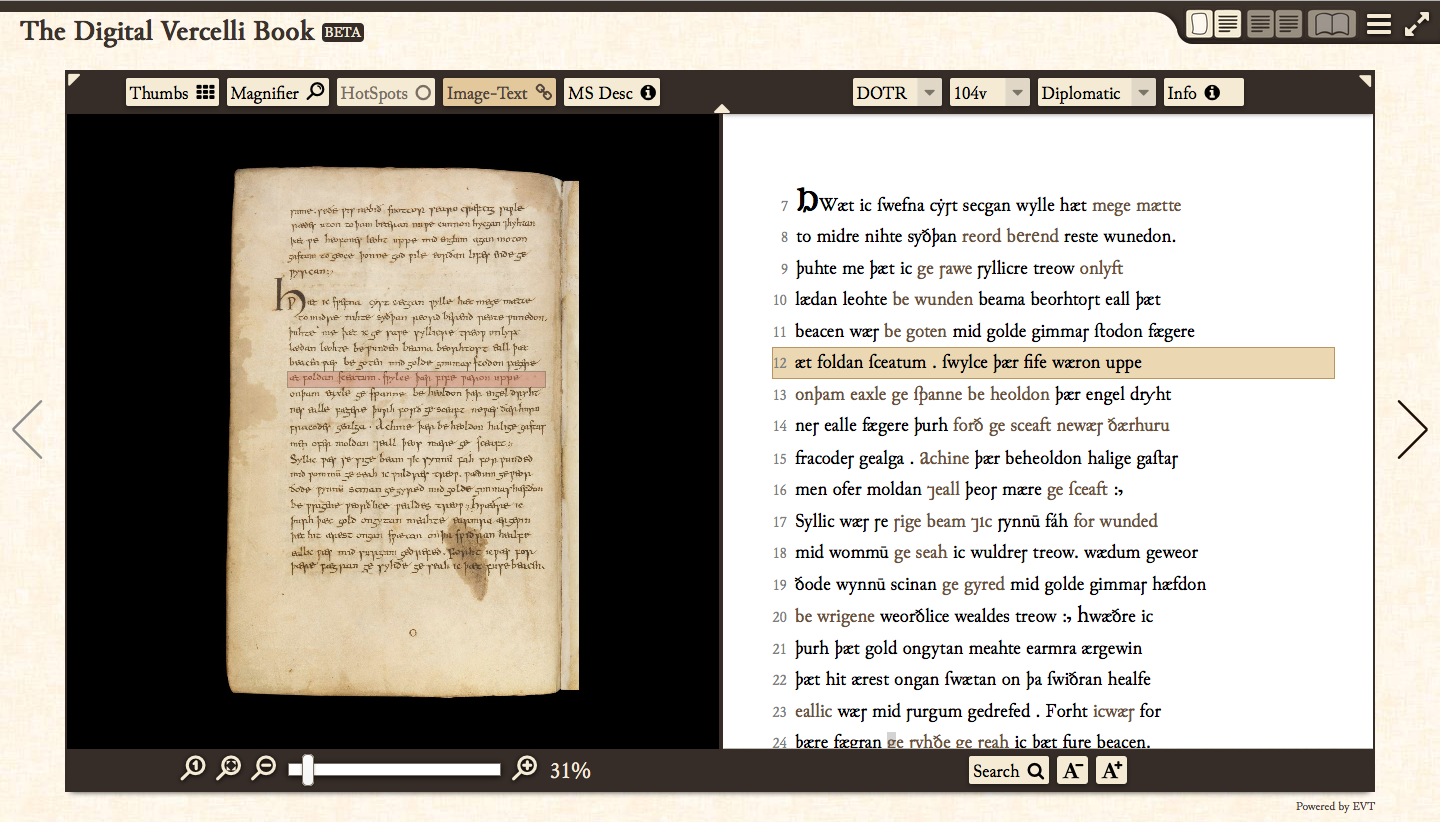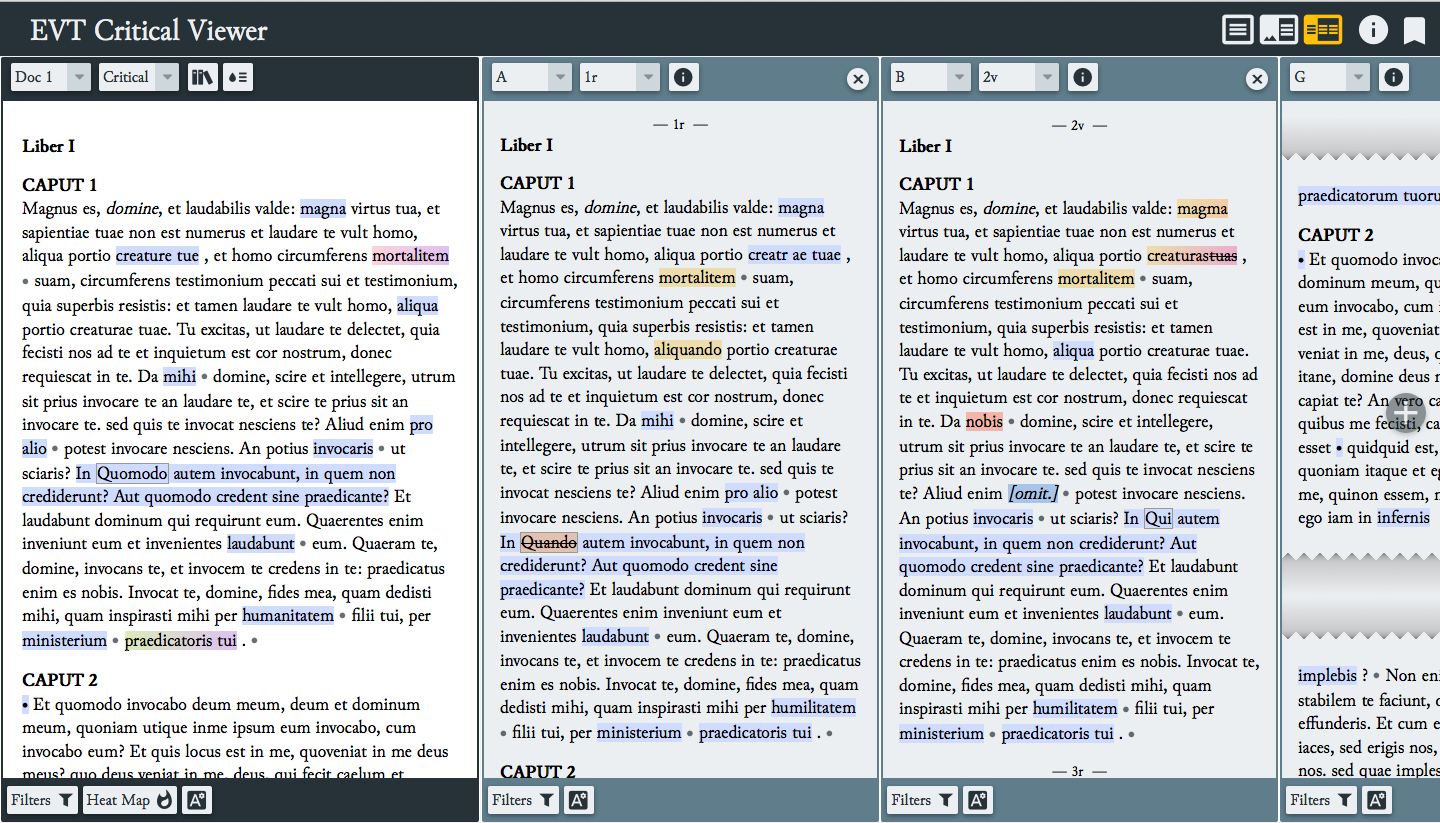A light-weight, open source tool specifically designed to create digital editions from XML-encoded texts, freeing the scholar from the burden of web programming and enabling the final user to browse, explore and study digital editions by means of a user-friendly interface.

Everything is created around the data and the encoded text itself: by applying a single style sheet to the TEI XML file holding the transcription of a document, an XSLT 2.0 transformation chain is started and the end result is a web-based application – a mix of HTML 5, CSS3 and JavaScript – which can be easily shared on the Web.
Besides presenting the digital scans of the original manuscript (if available) linked to the corresponding text of the edition, it provides some other great features, such as the support for diplomatic and interpretative edition levels, an integrated search engine, the lists of named entities and SVG diagrams of the quire structure (thanks to VisColl).
Browse the sample editions to see some example of digital edition that can be created with EVT:
The 1.3 is the final release for EVT 1.*: after a short period to gather feedback and fix possible bugs in this version, the source code – which has been moved to a public repository on GitHub – is now fully shared with the user community to be modified and/or enhanced as other developers may see fit.

The increasing number of available widgets has made the general layout quite complex with
regard to the interaction between them, and complicated to handle. The need for more
flexibility and modularity led us to a completely new infrastructure, based on MVC
design pattern.
The XSLT stylesheets have been abandoned in favor of a set of JavaScript parsers
specifically written to retrieve edition content directly from the XML file. Edition
data is then saved in a JSON structure, organized in such a way that it can be easily
and rapidly accessed when needed. The final styling of documents is entrusted to CSS
style-sheets and is easily customizable.
Browse the sample editions to see some example of digital edition that can be created with EVT2: